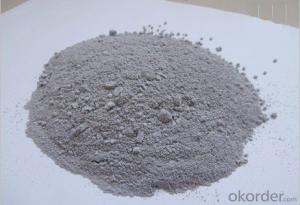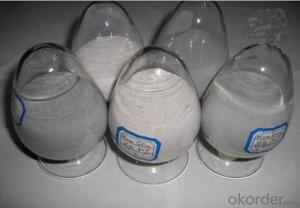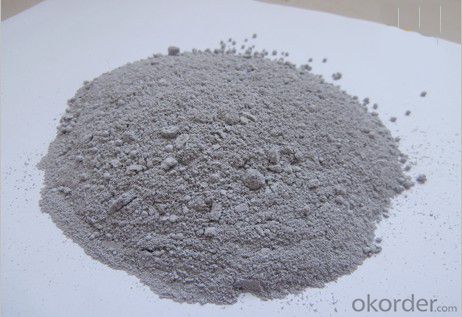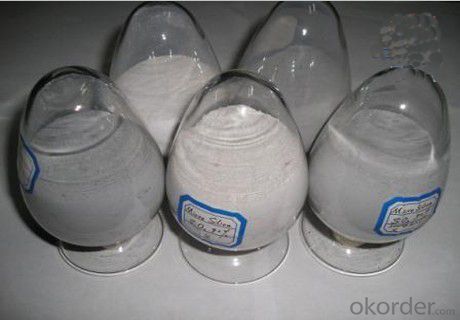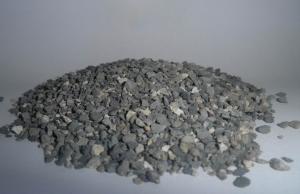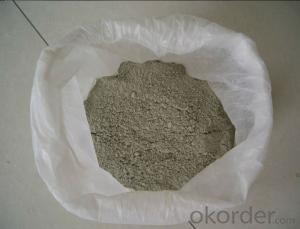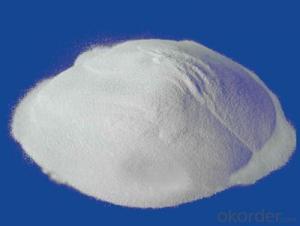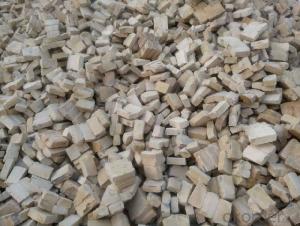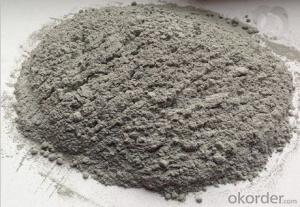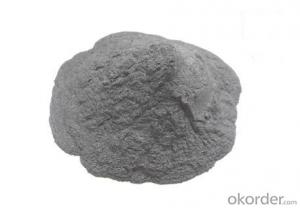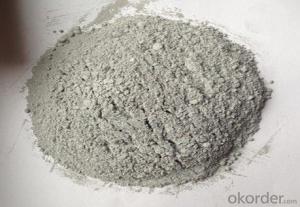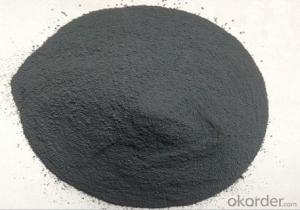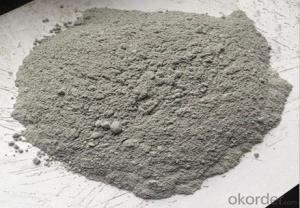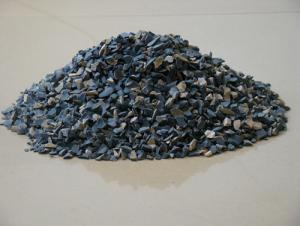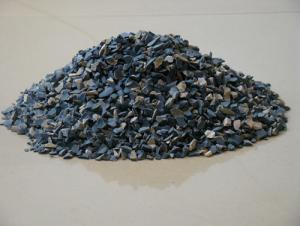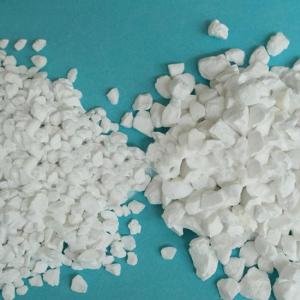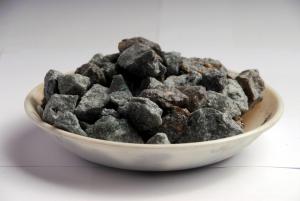Raw Materials for Refractory - Silicon Fume SF-90
- Loading Port:
- Tianjin
- Payment Terms:
- TT OR LC
- Min Order Qty:
- 50 m.t.
- Supply Capability:
- 5000 m.t./month
OKorder Service Pledge
OKorder Financial Service
You Might Also Like
CMAX Brand Silica fume is a byproduct of producing silicon metal or ferrosilicon alloys.It consists primarily of amorphous silicon dioxide (SiO2),its average granule diameter is 0.15~0.20 µm,specific surface area is 15000~20000 m2/kg.
1. Very low permeability to chloride and water intrusion.
2. Extremely high electrical resistivity.
3. Increased abrasion resistance on floors,highways,marin structures.
4. Superior resistance to chemical attack from chlorides,acids,sulfates.
Grey Densified and undensified Silica fume for cement
Analysis | Result | |||||||
SF85 | SF88 | SF90 | SF92 | SF94 | SF96 | SF97 | SF98 | |
SiO2(%)(min.) | 85.05 | 88.05 | 99.05 | 92.05 | 94.05 | 96.05 | 97.5 | 98.5 |
Fe2O3 (%) | 0.78 | 0.44 | 0.21 | 0.25 | 0.20 | 0.20 | 0.10 | 0.20 |
Al2O3 (%) | 0.29 | 0.20 | 0.21 | 0.25 | 0.20 | 0.20 | 0.20 | 0.20 |
CaO (%) | 0.39 | 0.30 | 0.36 | 0.30 | 0.30 | 0.30 | 0.30 | 0.30 |
K2O+ Na2O (%) | 0.29 | 0.24 | 0.22 | 0.20 | 0.20 | 0.20 | 0.20 | 0.20 |
Moisture (%) | 3.05 | 2.55 | 2.05 | 2.05 | 1.85 | 1.25 | 1.00 | 1.00 |
Loss on Ignition (L.O.I) @975OC (%) | ||||||||
- Q: Which are fireproofing external wall materials?
- According to combustion performance, external wall thermal insulation materials are classified as Grade-A and Grade-B. Grade-A refers to incombustible material and Grade-B combustible material. A few years ago the fire in CCTV building and Shenyang Hotel were caused by Grade-B material. Currently Grade-A material is more commonly uesd and less expensive than Grade-B material. Grade-A material can be divided into thermal mortar, phenolic foam board, rock wool board, foam cement board, etc. Thermal mortar is easy for construction and unexpensive, but it is also easy for faking due tou its simple procesing. It is recommended to find a large factory whihc has gone through the formalities.
- Q: Who knows the classifications of magnesia refractory?
- Magnesia chrome series products: The main ingredients of magnesium chromium series are MgO and Cr2O3. Periclase is the first phase and magnesia-chrome spinel is the second phase. Products belonging to this series are magnesium chrome brick and chrome magnesia brick. The main ingredients of magnesium aluminum series are MgO and Al203. As they generate MgO and Al203, all magnesium chromium series products contain magnesia material. magnesium calcium series products The main components are MgO and CaO. They have high melting points, which are important magnesia materials. 5, magnesium silicon series products: The main component of magnesite series is SiO2, when the C / S<5, SiO2 and MgO generate MgO.Al2O3 (forsterite). From the perspective of microscopic mineral, main products of pure aluminum series include magnesium aluminum brick, periclase spinel brick, corundum spinel brick and aluminum-spinel castable in unshaped materials. I hope this answer can help you.
- Q: Can anyone say something about the curtain wall fire-proof material key sealing point?
- Keypoints; 1, curtain wall design must consider the safety requirements, one of which is fire protection design. 2, Generally, fire protection planning between curtain walls should use the method of setting fireproof isolation layer. 3, Two layers of fireproof isolation layer whose thickness should not be less than 100mm respectively on the top edge and lower edge of the material parts of the house. 4, the fireproof isolation layer commonly uses 1.5mm thick galvanized steel sheet as supporting plate, using for shelving fireproof sheet. The 100mm thick cavity between the layers is filled with mineral wool non-combustible materials tightly covered with tinfoil on the surfaces. 5, protective isolation layer should try to reconcile curtain wall beam level and finish floor level, so as to fill non-combustible material and to avoid that a piece of glass acrosses two fire?compartments. 6, the beam should be inside 100mm thick fireproof isolation layer to protect the beam and the upper curtain wall plate. 7, when there are open fire function areas like large-scale hotel or restaurant kitchen inside the curtain walls, curtain wall glass in these parts should consider using cesium potassium fireproof glass to improve the fireproof rating in the region. 8, Fireproof setting in the around areas of curtain wall can use the same method of the above fireproof setting between layers. The joint parts of fireproof isolaton layer and main part as well as curtain wall should use fireproof sealant to seal.
- Q: How to choose thermal insulation materials for flood heating?
- By controlling the foaming ratio, nucleating agent size, moudle pressure, temperature of screw, vacuum foaming technology, extruded sheet of different density can be made. The density of commonly used plastic extruded board is 25-50 kg per cubic meter. Plate density is the main factor affecting the cost of the extruded plate. The higher the plate density, the higher the cost price. Plate density is the main factor affecting the cost of the extruded plate. The lower the density of extruded board, the worse quality performance. Plate density of common plastic extruded is between 30 to 38 kilograms per cubic meter. The density of plastic extruded plate of exterior wall is between 30-35, if the density is too low, then the plate will not be strong enough, if high, flexibility of plastic extruded board will be inadequent, unable to bear the stress brought by housing settlement deformation, resulting in cracks in the wall. With the extrusion plate for floor heating should be in 36 kilograms per cubic meter. If it is too low, ground subsidence will occur due to the low strength, resulting in the ground crack. If density is too high, the thermal conductivity coefficient will increases, impacting energy saving. High density extruded plate is generally used for occasions having special requirements for compressive. Parking lot roof should use extruded plate above X350, whose density is 40 kg per cubic meter. The aircraft need to use the Ping extruded board above X500, density in 45 kilograms per cubic meters. High speed railway subgrade need to use extruded plastic board above 700KPA,
- Q: What are the models of bauxite with high alumina?
- China Ferrous Metal Industry Corporation released the industry standard of bauxite (YS / T78-94) in 1994. According to this standard, bauxite can be divided to sedimentary diaspore, stacked type diaspore and lateritic gibbsite. According to the chemical composition, it can be divided into nine trade marks as LK12-70, LK8-65, LK5- 60, LK3-53, LK15-60, LK11-55, LK8-50, LK7-50 and LK3-40. In addition to the provisions of chemical composition of bauxite, the standard also requires that the water of sedimentary diaspore shall not exceed 7% and water of stacked type diaspore and lateritic gibbsite shall not exceed 8%. Moreover, particle size of bauxite should be not greater than 150mm. Bauxite shall not be mixed with clay, limestone and other debris.
- Q: What are the construction measures of refractory material in winter? Please descriptive briefly.
- Binding agent should be attaced great importance to when construction is conducted in winter. Generally if the bingding agent is water or cement, antifreezing measures should be taken.
- Q: Where is the sizing nozzle for refractories? Just enter the line, master into!
- Hua Heng refractories in the industry reputation is good, especially in the Southern small steel sales are among the best!
- Q: The following statement is correct: artificial corundum has a high melting point and can be used as a high grade refractory material. The main component is silica dioxide
- It's D,1. artificial corundum is mainly composed of three aluminium oxide two4, color glasses are not added cuprous oxide, silver halide is added
- Q: What are the specific steps of stirring the steel ladle castable?
- Steps are as follows. 1 Compulsory mixer is used to stir the castable and bags, rope and other debris can not mix in the castable when stirred. 2, Castable should be unpacked on the scene. Stirred volume depends on the capacity of the mixer. Castable should be accurately measured and put into a blender. 3 The process of first dry mixing and then wet mixing is adopted. After the castable is added to the mixer, it is dryly mixed for 2 minutes, add about 5.2 to 5.5 percent of water and continue to add water while stirring. Water that is 80% of the total should be added, and then decide whether to continue to add or not depending on the consistence (noting that the water must be clean water and sewage can not be used). Then it is wetly mixed for 4 minutes and stirred for not less than 6 minutes at one time, until castable is even. In general, the bottom is slightly dry and the wall of the ladle is slightly dilute (the amount of water is only for reference). 4, The amount of water and mixing time should be controlled strictly when stirred to ensure that the needs of the consistency are met. If castable is too thin, it will seriously affect the quality of the material. The stirred volume, stirring time and water that is added should be consistent and they can not suddenly be thick or suddenly be thin. If the consistency does not meet the requirements, the castable should be put back to the mixer and stirred with appropriate water or dry materials. 5, It should be stirred evenly and casting should finish in 20 minutes, in order to avoid sclerosis, affecting structural strength of ladle lining 6, After each completion of construction, varieties of castable should be changed and the mixer should be cleaned 7, Stirring can stop in halfway. If the mixer breaks down and it can be repaired in a short time, some of the materials have to be removed before the machine is opened. If the machine can be repaired on time, castable refractory should all be removed.
- Q: What is the main material of fireproof wooden door?
- Fireproof door is an important part of fire-fighting apparatus and society fire prevention, so the quality and use of fireproof door is the key to the success of the fire prevention. Some customers don't know clearly that whether the fireproof door should install a door closer. Today I specially read the explanation of relevant state departments for fireproof door, in the explanation in 5.3.3, fireproof door should be installed fireproof door closer or set, so that normally open fireproof door can automatically close close-door device of the door leaf (except for the use of special parts, such as pipe shaft doors, etc.) in the event of a fire. In other words, except for some special parts which don't need to be installed door?closer, such as pipe shaft doors, other parts are required to install fireproof door closer.
Send your message to us
Raw Materials for Refractory - Silicon Fume SF-90
- Loading Port:
- Tianjin
- Payment Terms:
- TT OR LC
- Min Order Qty:
- 50 m.t.
- Supply Capability:
- 5000 m.t./month
OKorder Service Pledge
OKorder Financial Service
Similar products
Hot products
Hot Searches
Related keywords
